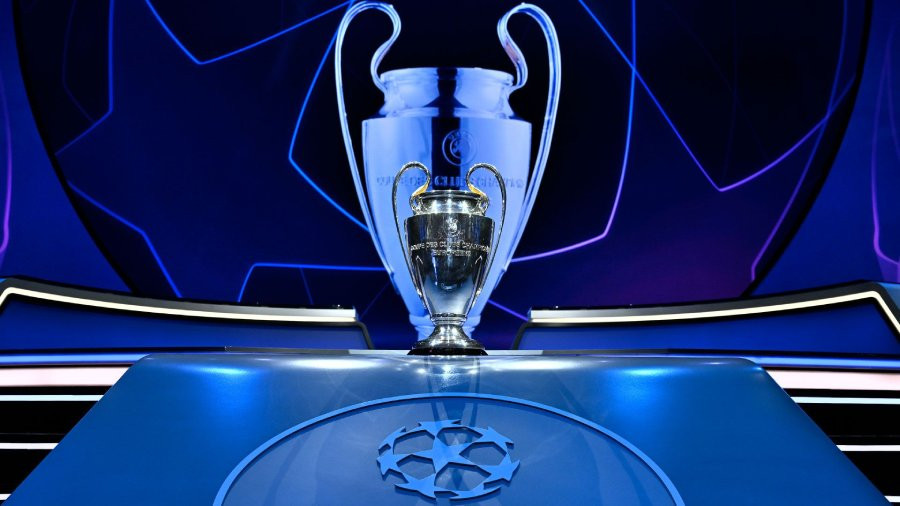A new format brings new expectations in the Champions League this season, with clubs looking at the mathematics to see how many points they would need to qualify for the knockout rounds in the league phase structure.
The 36 teams form a single league, with each entrant playing eight different clubs, four at home and four away. Three points are awarded for a win and one for a draw.
The bottom 12 teams will be eliminated with no access to the Europa League.
Teams that finish between ninth and 16th will be seeded in the knockout phase play-off draw, meaning they will face a team placed 17th to 24th.
The eight clubs that prevail in the knockout phase play-offs will then progress to the round of 16, where they will each face one of the top-eight finishers, who will be seeded.
The pairings of the knockout phase will also be partly determined by the league phase rankings, with a draw which lays out the route for teams to reach the final.
Understanding the Points Race
The Opta supercomputer believes 16 points from a possible 24 - so five wins and a draw from eight matches, or other combinations - would almost certainly be enough to finish in the top eight, which guarantees you a last-16 spot in the New Year.
The data also believes 15 points - so five wins from eight games, or other combinations - could be enough to sneak into eighth place, with that points tally being enough in 73 per cent of Opta's 50,000 simulations of the league phase.
Fourteen points, so four wins and two draws or other combinations, is unlikely to be enough for a top-eight finish - so the race to five wins is likely to be the target for the biggest sides.
To finish in the top 24, which guarantees you a play-off spot at least, Opta believes 10 points - so three wins and a draw, or other combinations - will almost certainly guarantee you a place in that round.
It means teams who win in the opening round of Champions League fixtures need just seven points from the remaining seven games to guarantee themselves a play-off spot.
Nine points - so three wins from eight games, or other combinations - could be enough to finish 24th, with that points tally being enough in 69 per cent of the simulations.
But just eight points - so two wins and two draws, or other combinations - runs the risk of elimination, with that points tally being sufficient in just 16 per cent of the simulations.
Teams will be targeting at least three wins from eight to give them the best possible chance of reaching the Champions League knockout rounds.
A New Era of Uncertainty
And now for $omething €ompl£t£ly diff£r£nt: the beginning of the Champions League’s Swiss Model era. Think of it as men’s football’s answer to Brat summer, only with less hedonism, loads more anxiety, billions of pounds being trousered by suits and a mysterious spate of soft-tissue injuries.
So far it’s going well, with one of the best players in the world marking the big day by confirming he and his peers have had their fill of games being added to the calendar.
Whatever you think of the new format – I can see both sides! – it will still end with Real Madrid one lucky team enjoying the greatest high in club football. The magic of becoming European champions will never fade. AC Milan and Liverpool, who meet tonight, have done so seven and six times respectively, with only Real Madrid winning the competition more often.
A Clash of European Titans
Both clubs are European Cup royalty. Alas, if we’re talking royalty, in recent times Milan have been more like [redacted]. They haven’t reached the final since beating Liverpool 2-1 in Athens in 2007. In fact they’ve only reached the semi-final once in the last 17 years, and even that memory must stay in a sealed box: after fighting their way past Spurs and Napoli in 2022-23, they were hammered by Internazionale in the last four.
Liverpool have reached the final in three of their last six Champions League campaigns and have begun the season well under Arne Slot, even if they ran head first into a tree against Nottingham Forest on Saturday. Milan are 10th in Serie A after a mixed start under Paulo Fonseca, but they are joint top-scorers and hammered Venezia 4-0 at the weekend.
I’d love to say this is a must-win game for both sides, but I don’t want to lie to you. Not yet. We may eventually reflect that the result of tonight’s game was decisive; right now it feels less about jeopardy and more about novelty.
Kick off 8pm.
The Night in Review: A Match of Two Halves
Liverpool lead at San Siro after a impressive, cool-headed fightback. They were stung on the break in the third minute by Christian Pulisic, but the centre-halves Ibrahima Konate and Virgil van Dijk made reparations by scoring with emphatic close-range headers.
The second half was a different story, as Liverpool dominated possession and created several chances. The two teams had contrasting approaches to the game: Liverpool pushed for a third, creating several dangerous moments, while Milan focused on defense and looking to exploit gaps in Liverpool's defense on the counter-attack.
The victory showcased Liverpool's strength in attack and their ability to bounce back from setbacks. The match also highlighted the importance of set pieces, which proved crucial for Liverpool in securing the win.
A Night of Thrills and Setbacks
The night was filled with dramatic moments, starting with the opening goal by Pulisic, which sent a jolt of excitement through the San Siro. The fans erupted in celebration, and for a few moments, it looked like the match might be a Milan show.
However, Liverpool's response was swift and decisive, with Konate and Van Dijk's goals changing the complexion of the match.
The match also witnessed some individual moments of brilliance, with Gakpo's runs and Salah's shots keeping the Milan defense on its toes.
However, the night wasn't without its setbacks. Both teams experienced moments of frustration, with Milan missing key opportunities and Liverpool facing a resolute defense.
This match marked the beginning of a new era for the Champions League, and the new format promises a season filled with excitement and uncertainty. The night gave us a glimpse of what this new era could hold. While some teams may struggle to adapt, the teams that embrace the challenge could emerge stronger than ever before.


















